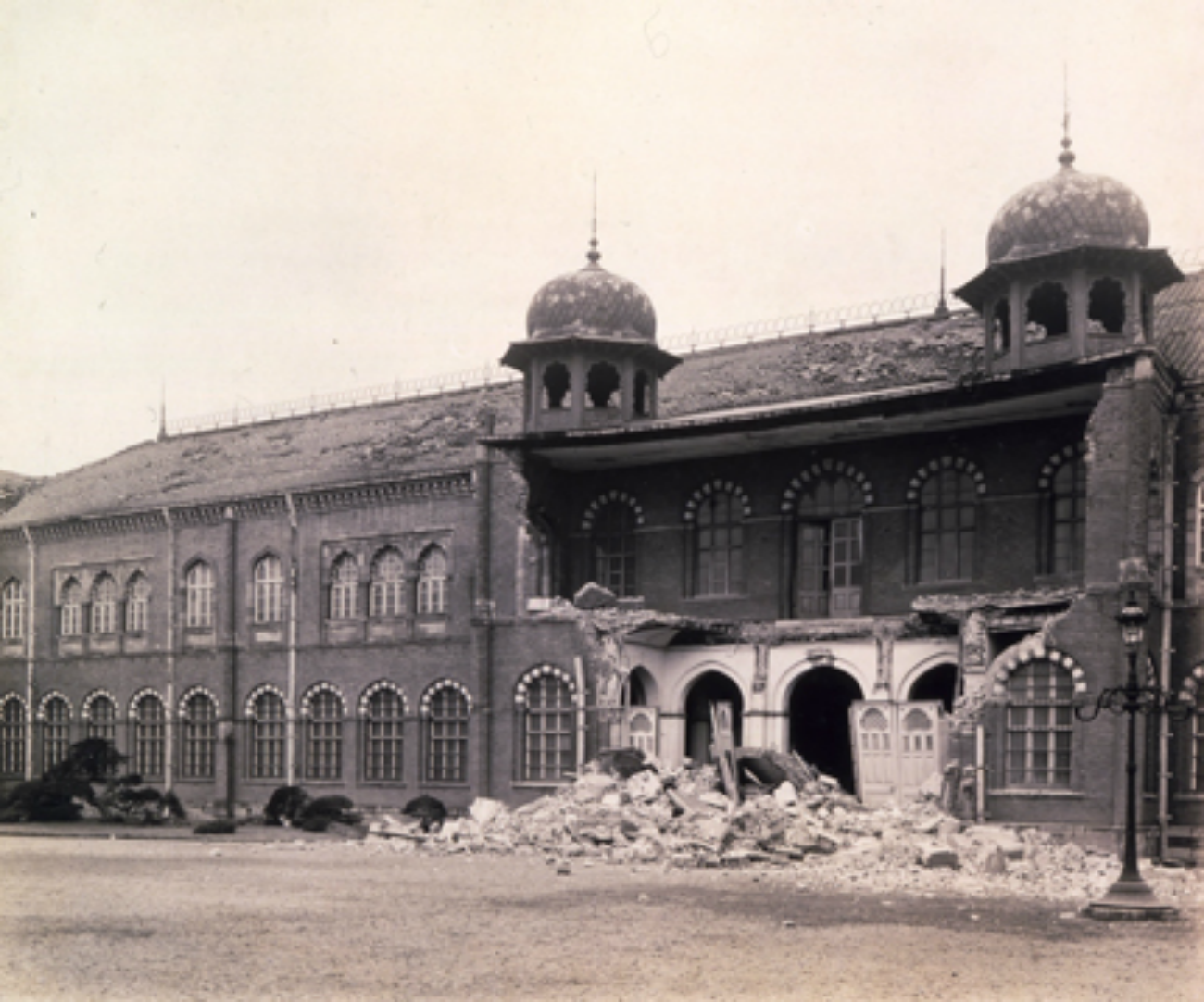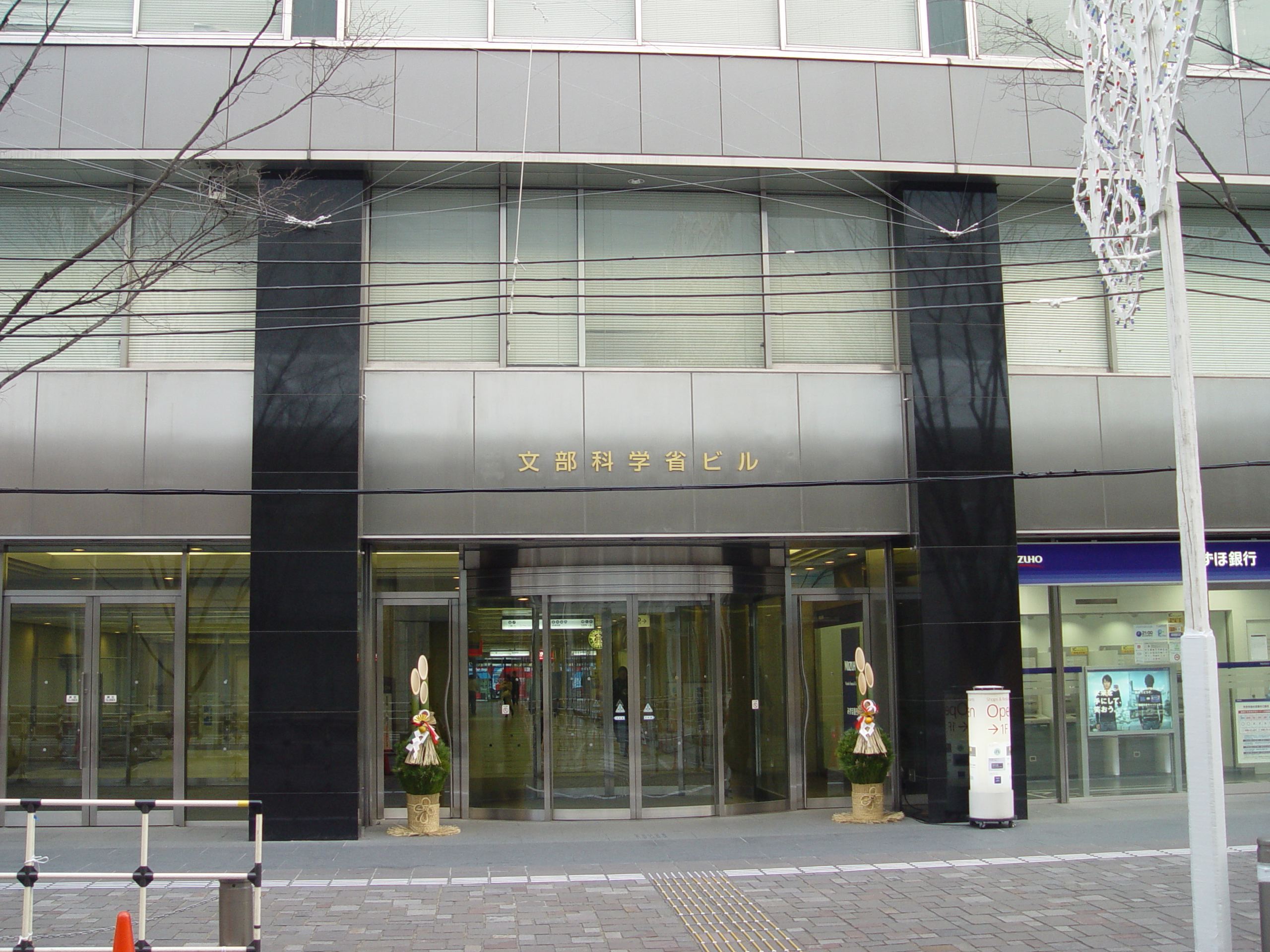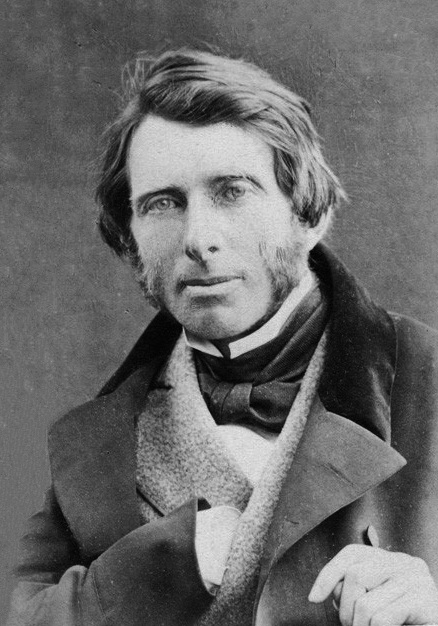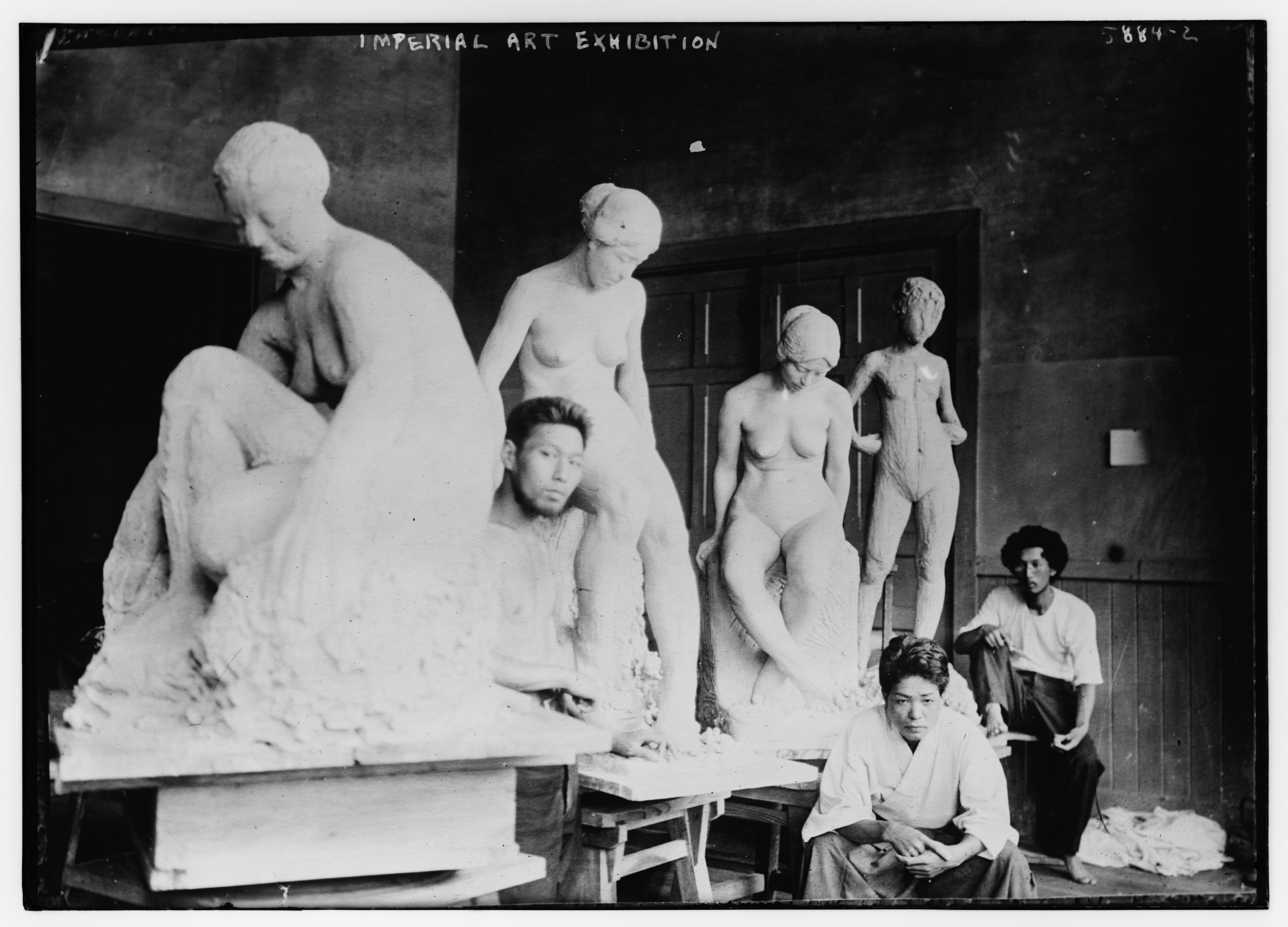|
Hishida Shunsō
was the art-name, pseudonym of a Japanese painting, Japanese painter from the Meiji period. One of Okakura Kakuzō, Okakura Tenshin's pupils along with Yokoyama Taikan and Kanzan Shimomura, Shimomura Kanzan, he played a role in the Meiji era innovation of ''Nihonga''. His real name was Hishida Miyoji. He was also known for his numerous paintings of cats. Biography Shunsō was born in 1874 in what is now part of Iida, Nagano, Iida city in Nagano Prefecture. In 1889 he moved to Tokyo to study under Kanō school artist Yuki Masaaki (1834–1904). The following year, he enrolled at the ''Tōkyō Bijutsu Gakkō'' (the forerunner of the Tokyo National University of Fine Arts and Music). Shunsō was one year junior to his colleagues Yokoyama Taikan and Kanzan Shimomura, Shimomura Kanzan; his teacher was Hashimoto Gahō. Shunsō, Taikan and Kanzan were heavily influenced by Okakura Kakuzō, Okakura Tenshin and Ernest Fenollosa during their time at the ''Tōkyō Bijutsu Gakkō''. Afte ... [...More Info...] [...Related Items...] OR: [Wikipedia] [Google] [Baidu] |
Iida, Nagano
is a Cities of Japan, city in Nagano Prefecture, Japan. , Iida had an estimated population of 101,536, and a population density of 154 persons per km2. The total area of the city is . Iida is an , a municipalities of Japan, municipality designated by the Japanese government to be a model for making large cuts in greenhouse gas emissions towards a low-carbon society. Geography Iida is the southernmost city of Nagano Prefecture. Mount Hijiri at is the highest elevation in the city. Iida lies 90 minutes northeast of the major city of Nagoya by automobile via the Chūō Expressway. The same expressway also provides access to Tokyo, about four hours to the east. The nearest large metropolis to Iida is Nagoya, which is easily accessible by bus (about 2 hours). The larger cities of Matsumoto and Nagano in central and northern Nagano Prefecture are also accessible by bus and train. There is also a bus service to Shinjuku, Tokyo, which takes about four hours. Surrounding municipalities ... [...More Info...] [...Related Items...] OR: [Wikipedia] [Google] [Baidu] |
Tokyo National Museum
The or TNM is an art museum in Ueno Park in the Taitō wards of Tokyo, ward of Tokyo, Japan. It is one of the four museums operated by the , is considered the oldest national museum and the largest art museum in Japan. The museum collects, preserves, and displays a comprehensive collection of artwork and cultural objects from Asia, with a focus on ancient and medieval Japanese art and Asian art along the Silk Road. There is also a large collection of Greco-Buddhist art. As of April 2023, the museum held approximately 120,000 Cultural Properties, including 89 National Treasure (Japan), National Treasures, 319 List of Hōryū-ji Treasures at Tokyo National Museum, Horyuji Treasures, and 649 Important Cultural Properties of Japan, Important Cultural Properties. As of the same date, the Japanese government had designated 902 works of art and crafts as National Treasures and 10,820 works of art and crafts as Important Cultural Properties, so the museum holds about 10% of the works of a ... [...More Info...] [...Related Items...] OR: [Wikipedia] [Google] [Baidu] |
Commemorative Stamp
A commemorative stamp is a postage stamp, often issued on a significant date such as an anniversary, to honor or commemorate a place, event, person, or object. The ''subject'' of the commemorative stamp is usually spelled out in print, unlike definitive stamps which normally depict the subject along with the denomination and country name only. Many postal services issue several commemorative stamps each year, sometimes holding first day of issue ceremonies at locations connected with the subjects. Commemorative stamps can be used alongside ordinary stamps. Unlike definitive stamps that are often reprinted and sold over a prolonged period of time for general usage, commemorative stamps are usually printed in limited quantities and sold for a much shorter period of time, usually, until supplies run out. First commemoratives There are several candidates for the title of the first commemorative. A 17-cent stamp issued in 1860 by New Brunswick, showing the Prince of Wales in antic ... [...More Info...] [...Related Items...] OR: [Wikipedia] [Google] [Baidu] |
National Museum Of Modern Art, Tokyo
The , also known as MOMAT, is the foremost museum collecting and exhibiting modern Japanese art. The museum, in Chiyoda, Tokyo, Japan, is known for its collection of 20th-century art and includes Western-style and ''Nihonga'' artists. It has a branch, the National Crafts Museum (Japan), National Crafts Museum, in the city of Kanazawa. History The National Museum of Modern Art, Tokyo, was the first national museum of art in Japan and dates back to 1952, when it was established as an institution governed by the Ministry of Education. The architect of the building was Kunio Maekawa. On two later occasions, neighbouring premises were purchased and the museum was enlarged. The most recent redesign of MOMAT was conceived by Yoshirō Taniguchi (father of Yoshio Taniguchi, who designed the extension of Museum of Modern Art, MOMA in New York). Collections The collection contains many notable Japanese artists since the Meiji period, and a few contemporary Western prints. In the early yea ... [...More Info...] [...Related Items...] OR: [Wikipedia] [Google] [Baidu] |
Eisei Bunko Museum
The is a museum in Bunkyo-ku district in Tokyo, Japan. Its collection includes historical documents and artifacts, and works of fine art. The museum is located what was formerly the grounds of the Hosokawa clan, near the Shin-Edogawa Garden. History The Eisei-Bunko (Eisei Archive) is a collection of important art objects acquired and passed down in the Hosokawa family, a ''daimyō'' of 540 thousand-goku (one of the five top ''daimyōs'') in Higo, the present day Kumamoto in Kyushu. The collection has been in existence since the Nanboku-chō Era or the 14th century and is noted for possessing close to 112 thousands objects. In 1950, the archive was turned into a foundation and a public museum was opened in 1973. Currently the display at the museum is rearranged three times a year at which occasion special events are organized for its members. Collection See also *List of National Treasures of Japan (archaeological materials) *List of National Treasures of Japan (crafts-o ... [...More Info...] [...Related Items...] OR: [Wikipedia] [Google] [Baidu] |
Agency For Cultural Affairs
The is a special body of the Japanese Ministry of Education, Culture, Sports, Science and Technology (MEXT). It was set up in 1968 to promote Japanese arts and culture. The agency's budget for FY 2018 rose to ¥107.7 billion. Overview The agency's Cultural Affairs Division disseminates information about the arts within Japan and internationally, and the Cultural Properties Protection Division protects the nation's cultural heritage. The Cultural Affairs Division is concerned with such areas as art and culture promotion, art copyrights, and improvements in the national language. It also supports both national and local arts and cultural festivals, and it funds traveling cultural events in music, theater, dance, art exhibitions, and film-making. Special prizes are offered to encourage young artists and established practitioners, and some grants are given each year to enable them to train abroad. The agency funds national museums of modern art in Kyoto and Tokyo and The National ... [...More Info...] [...Related Items...] OR: [Wikipedia] [Google] [Baidu] |
Important Cultural Properties Of Japan
An The term is often shortened into just is an item officially classified as Tangible Cultural Property (Japan), Tangible Cultural Property by the Government of Japan, Japanese government's Agency for Cultural Affairs (Ministry of Education, Culture, Sports, Science and Technology) and judged to be of particular importance to the history, arts, and culture of the Japanese people. Classification of Cultural Properties To protect the cultural heritage of Japan, the Law for the Protection of Cultural Properties was created as a under which important items are appropriated as Cultural Properties,In this article, capitals indicate an official designation as opposed to a simple, unofficial definition, e.g "Cultural Properties" as opposed to "cultural properties". thus imposing restrictions to their alteration, repair and export. Besides the "designation system", there exists a , which guarantees a lower level of protection and support to Cultural Properties of Japan, Registered Cultur ... [...More Info...] [...Related Items...] OR: [Wikipedia] [Google] [Baidu] |
Kidney Disease
Kidney disease, or renal disease, technically referred to as nephropathy, is damage to or disease of a kidney. Nephritis is an Inflammation, inflammatory kidney disease and has several types according to the location of the inflammation. Inflammation can be diagnosed by blood tests. Nephrosis is non-inflammatory kidney disease. Nephritis and nephrosis can give rise to nephritic syndrome and nephrotic syndrome respectively. Kidney disease usually causes a loss of Assessment of kidney function, kidney function to some degree and can result in kidney failure, the complete loss of kidney function. Kidney failure is known as the end-stage of kidney disease, where Kidney dialysis, dialysis or a Kidney transplantation, kidney transplant is the only treatment option. Chronic kidney disease is defined as prolonged kidney abnormalities (functional and/or structural in nature) that last for more than three months. Acute kidney disease is now termed acute kidney injury and is marked by the ... [...More Info...] [...Related Items...] OR: [Wikipedia] [Google] [Baidu] |
Art Critic
An art critic is a person who is specialized in analyzing, interpreting, and evaluating art. Their written critiques or reviews contribute to art criticism and they are published in newspapers, magazines, books, exhibition brochures, and catalogues and on websites. Some of today's art critics use art blogs and other online platforms in order to connect with a wider audience and expand debate. Opinions Differently from art history, there is not commonly an institutionalisation, institutionalized training for art critics. Art critics come from different backgrounds and they may or may not be university trained. Professional art critics are expected to have a keen eye for art and a thorough knowledge of art history. Typically the art critic views art at art exhibition, exhibitions, art gallery, galleries, museums or artists' studios and they can be members of the International Association of Art Critics which has national sections. Very rarely art critics earn their living from writin ... [...More Info...] [...Related Items...] OR: [Wikipedia] [Google] [Baidu] |
Bunten
The is a Japanese art exhibition established in 1907. The exhibition consists of five art faculties: Japanese Style and Western Style Painting, Sculpture, Craft as Art, and Sho (calligraphy). During each exhibition, works of the great masters are shown alongside works of new but talented artists. It claims to be the largest combined art exhibition of its kind in the world and the most popular in Japan. Bunten In 1907, under the supervision of the Japanese Ministry of Education, Science, Sports and Culture, then called Mombushō (文部省), the first state art exhibition took place, the Monbushō Bijutsu Tenrankai (文部省 美術展 覧 会), abbreviated to "bunten" (文 展). It was held at the Tokyo Metropolitan Art Museum (東京都美術館, Tōkyō-to Bijutsukan.)It had the three faculties: Japanese Style Painting, Western Style Painting and Sculpture. Works were approved after being examined by a jury. The series of exhibitions took place twelve times under this na ... [...More Info...] [...Related Items...] OR: [Wikipedia] [Google] [Baidu] |
Nihon Bijutsuin
is a non-governmental artistic organization in Tokyo, Japan dedicated to ''Nihonga'' (Japanese style painting). The academy promotes the art of Nihonga through a biennial exhibition, the ''Inten'' Exhibition. History The Nihon Bijutsuin was founded by Okakura Tenshin in 1898, together with a group of artists, including Hashimoto Gahō, Yokoyama Taikan, Shimomura Kanzan, Hishida Shunsō and several others, in response to Okakura being ousted from the Tokyo School of Fine Arts. Nihon Bijutsuin moved with Okakura to Izura, Ibaraki (now the city of Ibaraki) in 1906. However, Okakura was soon recruited by Ernest Fenollosa to assist in his efforts to introduce Chinese and Japanese arts to the western world via the Museum of Fine Arts, Boston, and soon lost interest in guiding the new organization. When Okakura died in 1913, the group dissolved. Nihon Bijutsuin was resurrected a year later in 1914 under Yokoyama Taikan, who relocated it back to Yanaka, Tokyo. In 1920, separate ... [...More Info...] [...Related Items...] OR: [Wikipedia] [Google] [Baidu] |
Tokyo University Of The Arts
or is a school of art and music in Japan. Located in Ueno Park, it also has facilities in Toride, Ibaraki, Yokohama, Kanagawa, Kitasenju and Adachi, Tokyo. The university has trained artists in the fields of painting, sculpture, crafts, inter-media, sound, music composition, traditional instruments, art curation and global arts. History Under the establishment of the National School Establishment Law, the university was formed in 1949 by the merger of the and the , both founded in 1887. The former Tokyo Fine Arts School was then restructured as the Faculty of Fine Arts under the university. Originally male-only, the school began to admit women in 1946. The graduate school opened in 1963, and began offering doctoral degrees in 1977. The doctoral degree in fine art practice initiated in the 1980s was one of the earliest programs to do so globally. After the abolition of the National School Establishment Law and the formation of the National University Corporations on April 1, ... [...More Info...] [...Related Items...] OR: [Wikipedia] [Google] [Baidu] |








